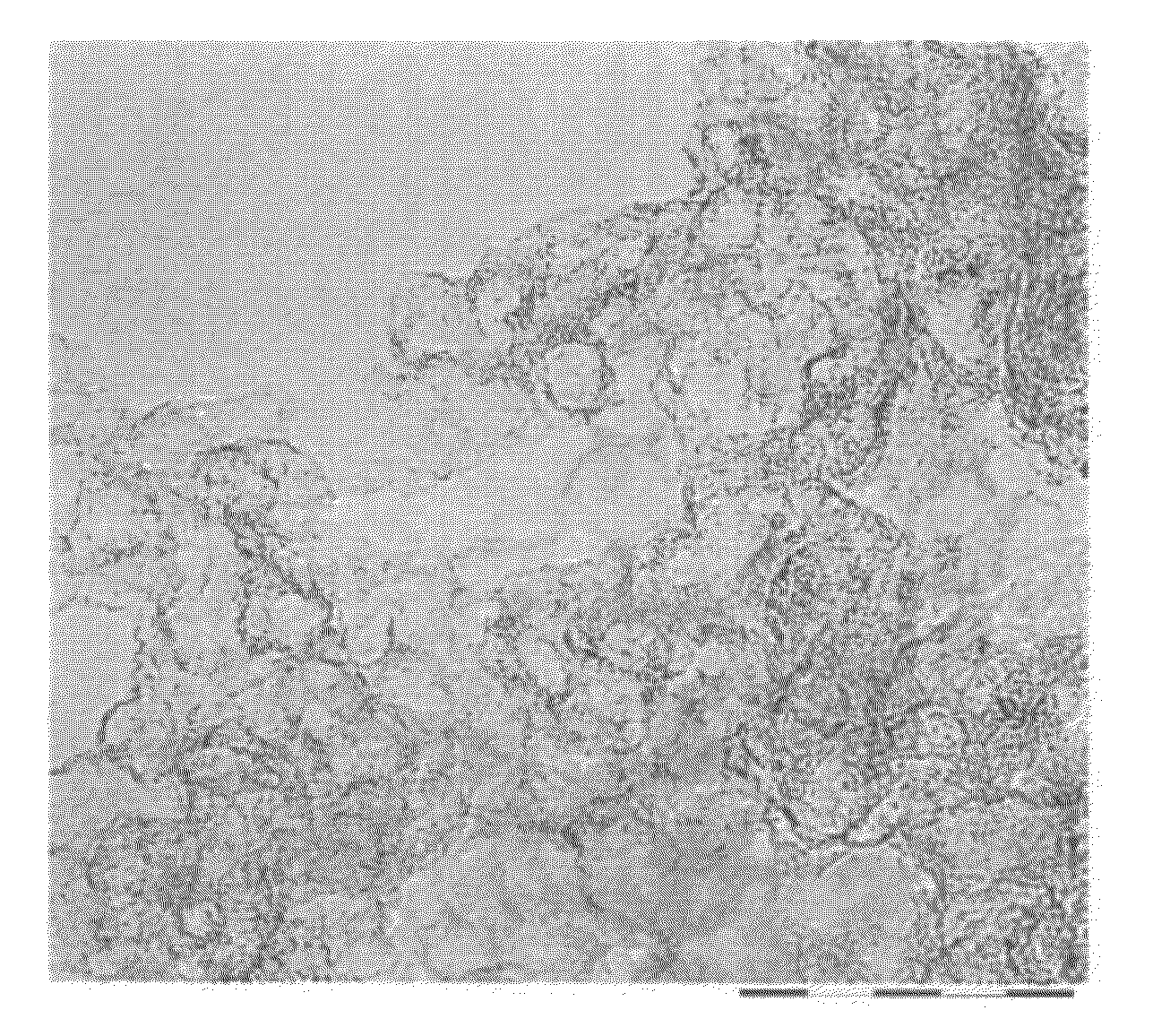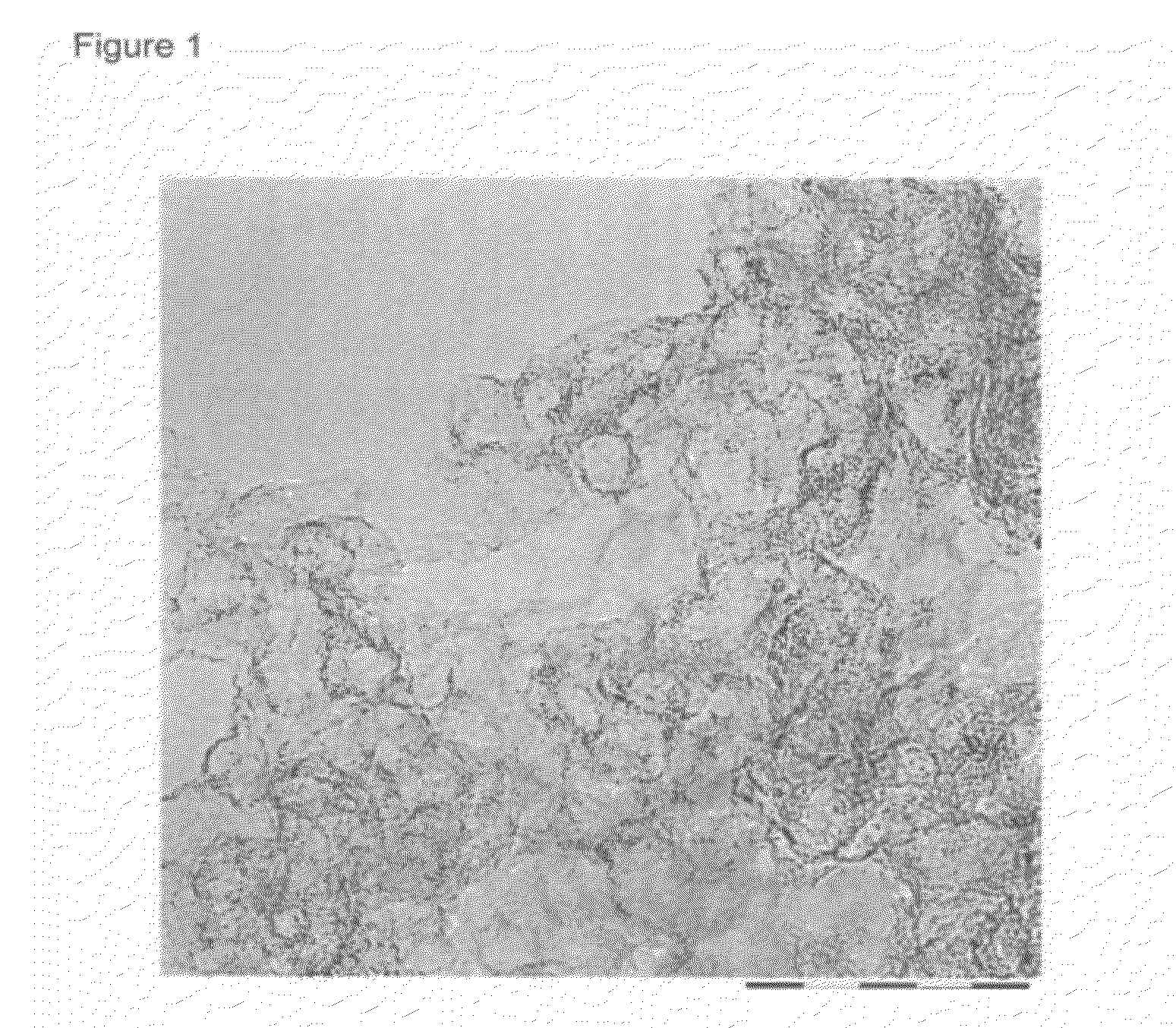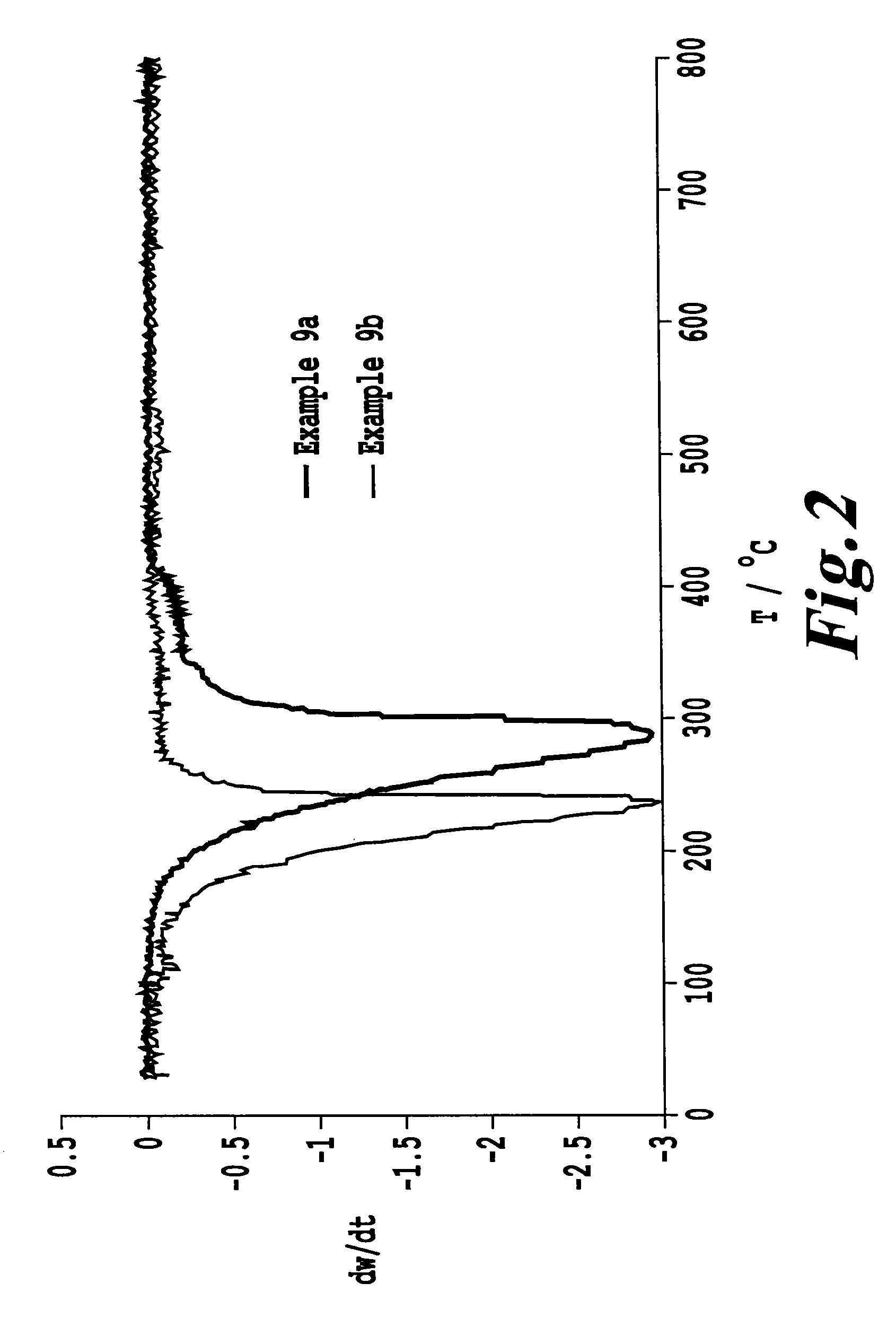Particulate porous carbon material and use thereof in lithium cells
a lithium cell and porous carbon technology, applied in the field of porous carbon material and lithium cell use, can solve the problems of complex demand profile of secondary batteries, limited capacity density or energy density, and relatively rapid loss of capacity with repeated charging, and the associated limit in the lifetime of the cell have been found to be problematic to da
- Summary
- Abstract
- Description
- Claims
- Application Information
AI Technical Summary
Benefits of technology
Problems solved by technology
Method used
Image
Examples
examples 1 to 7
General Method for Production of the Carbon Material Using Particulate Materials
[0220]1) 1 g of the particulate material specified in table 1 was suspended in 200 ml of dichloromethane. To this were added 240 mg of methanesulfonic acid, and the dispersion thus obtained was stirred at 22° C. for 15 min. Subsequently, the solvent was removed under reduced pressure. The solid thus obtained was dissolved in 200 ml of toluene. To this was added dropwise a solution of 2 g of 2,2′-spirobi[4H-1,3,2-benzodioxasilin] in 50 ml of toluene, and the mixture was stirred at 22° C. for 15 h. Subsequently, the pulverulent solid was filtered off and dried at 40° C. under reduced pressure to constant weight.[0221]2) The powder obtained in step 1 was subsequently carbonized in a tubular furnace in an argon stream at 800° C. or 1100° C. for 2 h. In this way, a black powder was obtained.[0222]3) The powder obtained in step 1 was subsequently stored in 40% aqueous HF for 3 d. Subsequently, the remaining po...
example 8
General Method for Production of the Carbon Material without Use of Particulate Materials
[0223]1) 240 mg of methanesulfonic acid were dissolved in 200 ml of toluene. To this was added dropwise a solution of 2 g of 2,2′-spirobi[4H-1,3,2-benzodioxasilin] in 50 ml of toluene, and the mixture was stirred at 22° C. for 15 h. Subsequently, the pulverulent solid was filtered off and dried at 40° C. under reduced pressure to constant weight.[0224]2) The powder obtained in step 1 was subsequently carbonized in a tubular furnace in an argon stream at 800° C. or 1100° C. for 2 h. In this way, a black powder was obtained.[0225]3) The powder obtained in step 1 was subsequently stored in 40% aqueous HF for 3 d. Subsequently, the remaining powder was filtered off, washed with water and ethanol, and dried at 40° C. under reduced pressure to constant weight.
[0226]The powders thus obtained had, according to elemental analysis, a carbon content of >84% by weight and a silicon content of <2% by weight....
example 9a
Production of a Sulfur-Containing Composite Material from Sulfur and an Inventive Carbon Material
[0229]1 g of the powder from example 7.3 was melted with 6 g of elemental sulfur at a temperature of 140° C. and left at this temperature for 5 h. The solid obtained in the course of cooling was ground to a powder by means of a mortar and pestle.
PUM
| Property | Measurement | Unit |
|---|---|---|
| distance | aaaaa | aaaaa |
| pore diameter | aaaaa | aaaaa |
| pore diameter | aaaaa | aaaaa |
Abstract
Description
Claims
Application Information
 Login to View More
Login to View More - R&D
- Intellectual Property
- Life Sciences
- Materials
- Tech Scout
- Unparalleled Data Quality
- Higher Quality Content
- 60% Fewer Hallucinations
Browse by: Latest US Patents, China's latest patents, Technical Efficacy Thesaurus, Application Domain, Technology Topic, Popular Technical Reports.
© 2025 PatSnap. All rights reserved.Legal|Privacy policy|Modern Slavery Act Transparency Statement|Sitemap|About US| Contact US: help@patsnap.com



